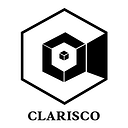How To Create a Metaverse NFT Marketplace: Features, Types, and Costs
In recent years, the concept of the metaverse has taken the world by storm, and with it, the demand for Metaverse NFT (Non-Fungible Token) marketplaces has soared. As more and more people immerse themselves in virtual worlds, the demand for unique digital assets within these metaverse environments has created a lucrative opportunity for entrepreneurs. In this blog, we will explore the key steps and considerations for creating a Metaverse NFT marketplace, as well as the different types, features, and costs involved in the development process. We will also highlight the importance of partnering with a Metaverse development company to bring your vision to life.
Understanding the Metaverse and NFTs
The Metaverse
The Metaverse is a collective virtual shared space, merging the physical and digital worlds, where users can interact with each other and digital objects in a three-dimensional, immersive environment. It’s a space where people can socialize, work, play, and engage in various activities, making it a vast, evolving ecosystem.
NFTs
NFTs are unique digital tokens that represent ownership of a specific digital or physical asset. They have gained immense popularity, especially in the art, gaming, and entertainment industries, as they ensure digital scarcity and proven ownership. NFTs are at the heart of the Metaverse, allowing users to buy, sell, and trade unique digital assets like virtual real estate, digital art, wearables, and more.
Metaverse NFT Marketplace Development
Types of Metaverse NFT Marketplaces
1. Primary Marketplaces:
These platforms allow creators to mint and sell their NFTs directly to users. Examples include OpenSea and Rarible.
2. Secondary Marketplaces:
These platforms enable users to trade NFTs that they’ve already purchased in primary marketplaces. Examples include NBA Top Shot and CryptoKitties.
3. Exclusive Marketplaces:
These are often created for specific metaverse environments and cater to unique assets, such as virtual real estate or in-game items. An example is Decentraland’s Marketplace.
Key Features of a Metaverse NFT Marketplace
1. User Wallet Integration:
Users should be able to connect their cryptocurrency wallets to buy, sell, and trade NFTs securely.
2. NFT Minting:
Creators must be able to mint NFTs by providing metadata, attributes, and other relevant information.
3. Search and Discovery:
Users should easily find and explore NFTs using search filters and categories.
4. Auction and Bidding:
Incorporate auction features for competitive bidding on NFTs.
5. Payment Gateway Integration:
Support multiple cryptocurrencies and offer a seamless payment experience.
6. Blockchain Integration:
The marketplace should integrate with a blockchain like Ethereum to ensure the security and authenticity of NFT transactions.
7. User Profiles:
Allow users to create profiles, showcase their collections, and interact with the community.
8. Licensing and Copyright Management:
Implement copyright and licensing features to protect intellectual property rights.
The Role of a Metaverse Development Company
Developing a Metaverse NFT marketplace can be a complex and demanding process. A professional Metaverse development company can provide invaluable assistance:
1. Expertise:
They bring experience and expertise in developing virtual environments and NFT marketplaces.
2. Customization:
Tailor the marketplace to your unique vision and brand.
3. Security:
Implement robust security measures to protect NFTs and user data.
4. Blockchain Integration:
Ensure smooth integration with blockchain technology.
5. Scalability:
Prepare your platform for future growth and increasing user traffic.
6. Regulatory Compliance:
Stay updated with legal and regulatory requirements surrounding NFTs and cryptocurrencies.
Development Costs
The cost of developing a Metaverse NFT marketplace can vary significantly depending on the complexity of the project. It typically includes expenses related to:
1. Development Team:
Salaries for developers, designers, and project managers.
2. Blockchain Fees:
Costs associated with blockchain transactions and smart contract deployment.
3. Licensing and Compliance:
Fees for legal consultations and compliance with regulations.
4. Hosting and Infrastructure:
Expenses for server space and infrastructure.
5. Marketing and Promotion:
Budget for marketing and promoting the platform.
6. Maintenance and Updates:
Ongoing costs for platform maintenance and updates.
Conclusion
Creating a Metaverse NFT marketplace can be a rewarding venture, but it requires careful planning, a clear vision, and the right development partner. The Metaverse and NFT markets are continuously evolving, making it an exciting space to explore. Whether you’re an artist, entrepreneur, or investor, understanding the key features, types, and costs of Metaverse NFT marketplace development is essential for success in this dynamic and rapidly expanding industry. Partnering with a Top Metaverse development company can help you turn your vision into a reality and navigate the complexities of this emerging landscape.
